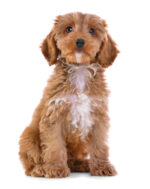Dogs generally start to be considered senior around the age of seven or eight, depending on the breed. Some dogs may need to start eating senior foods a bit sooner, such as the giant breeds, whereas some smaller breeds, such as a toy poodle, or chihuahua, may not be considered as senior until a few years later.
As dogs age, their health and stamina reduces. Their metabolism slows down, meaning that they will need to start consuming fewer calories in order to remain healthy.
What should I feed my senior dog?
There are so many dog food options out there, and many have age recommendations on the packaging but all advice will differ depending on the brand of food, and the breed of dog.
When your dog is considered of “senior” age, you may need to start feeding them a diet that is higher in fibre, and which contains a suitable amount of protein and fat. Alternatively, you may find that your dog prefers to stay on the same food, just in a smaller quantity.
If your dog likes to eat dry food, it can help to control tartar build up and could help to reduce gum disease.
How to feed senior dogs
It is advised to stick to a regular time to feed your dog. Ideally, you shouldn’t be feeding them more than twice a day. If you’re giving your dog dry food, ensure you keep it fresh in an airtight container. You may find that your dog struggles to eat dry food as they age, especially if they have a few missing teeth, so you may need to add a tiny bit of warm water to make it easier to chew.
Always ensure your dog has plenty of clean water available in a large bowl.
Remember
All dogs are different, so what works for one dog may not work for yours. It also depends highly on your dog’s health and if they have specific health requirements, such as diabetes or poor nutrient absorption. Routine vet exams and blood testing can be a good indication for what diet is best for your senior dog, so always consult your local vet practice if you are ever in doubt what you should be feeding them.
 The Vetsure Network
The Vetsure Network  Find a Vet Clinic
Find a Vet Clinic 